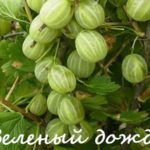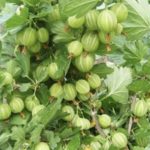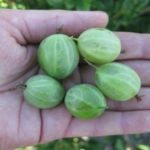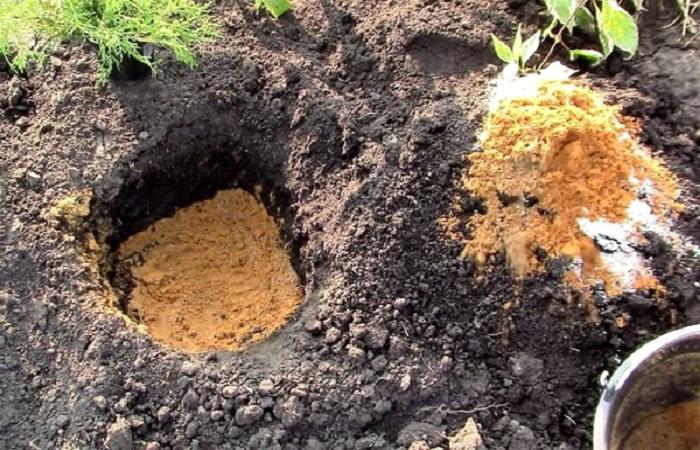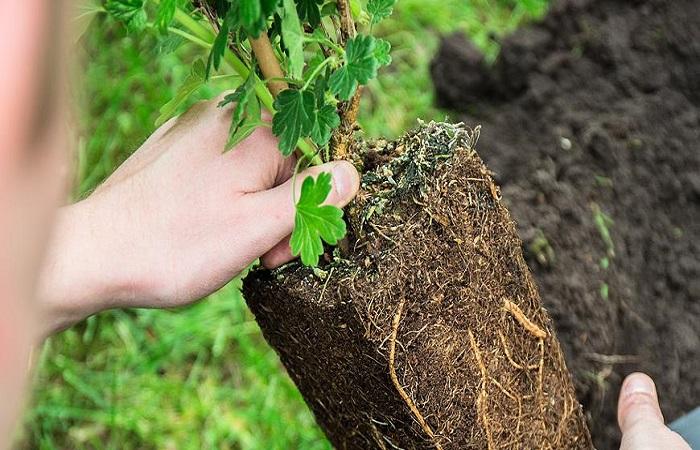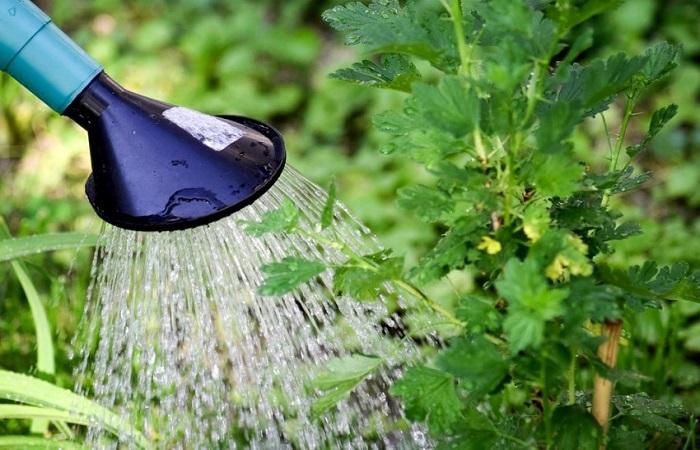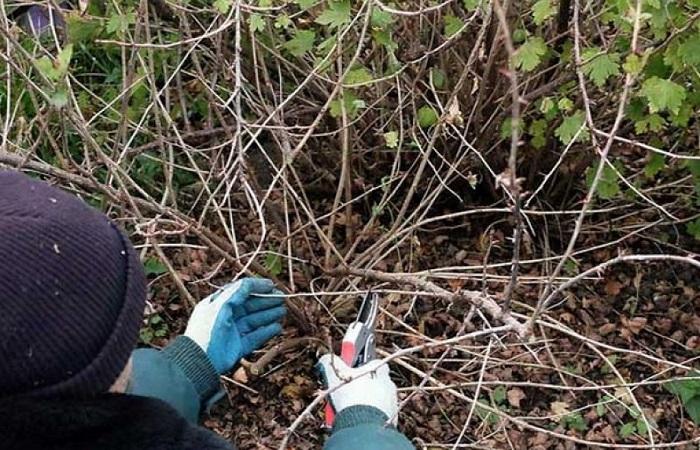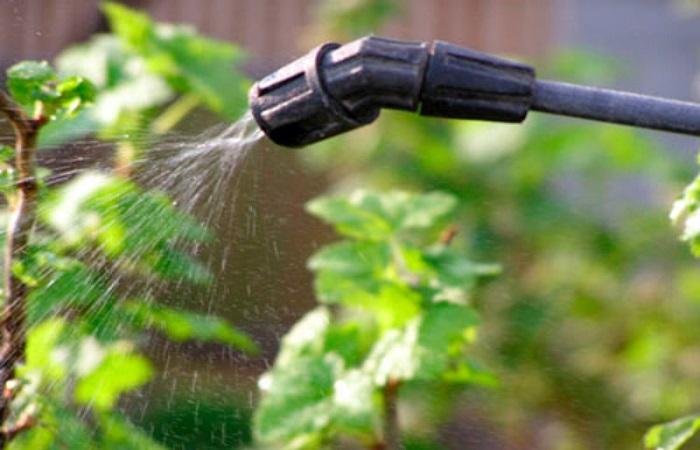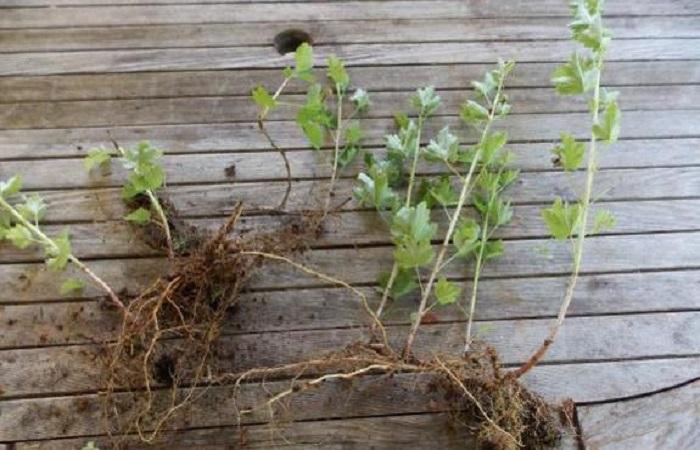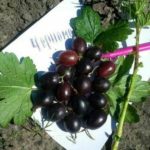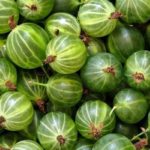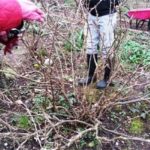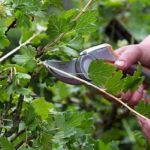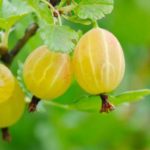Gooseberry variety Green Rain is a sloping bush with large berries that have a pronounced fragrant aroma. This is a hybrid that is highly resistant to many phytopathologies and the effects of certain external factors. It is characterized by high productivity, without requiring complex care. It can be grown at home for various purposes, including commercial ones.
- Description of the variety and brief characteristics
- Advantages and disadvantages
- Features of growing the Green Rain variety
- Site selection and soil preparation
- Planting dates and technology
- Further care for gooseberries
- Watering
- Soil treatment
- Trimming and installing supports
- Fertilizers
- Treatment against diseases and pests
- Wintering
- Plant propagation
- Harvest and storage
Description of the variety and brief characteristics
Gooseberry bushes are massive, but neat. The shoots are vertical, crowned with dense foliage of rich green color. There are few thorns on the branches; the thorns are located mainly at the base of the bush.
Gooseberries are large and oval. Their weight is approximately 8 g. As they ripen, they acquire a yellowish color, and veins appear on their surface. Due to the optimal length of the stalks, the berries are easily removed from the bushes without damage.
Advantages and disadvantages
Among the main advantages of the culture, gardeners highlight:
- simplicity, ease of care;
- high productivity;
- excellent taste;
- juiciness of berries;
- bush resistance to cold and drought;
- no need for shelter for the winter;
- the first period of fruiting begins the next year after planting the bush;
- high resistance to many phytopathologies;
- the possibility of using fruits for raw consumption or preparing canned food;
- no need for frequent pruning.
The only negative is the late onset of the fruiting period.
Features of growing the Green Rain variety
To grow gooseberries of the Green Rain variety, you need to set aside some space on your plot. And the process of planting shrubs itself will not take much time.
Site selection and soil preparation
Gooseberries love well-lit areas, protected from drafts and wind. The soil should be slightly acidic or neutral, loose and fertile. It is important that the groundwater lies deep underground, otherwise the roots of the bush will begin to rot.
Approximately 15-20 days before planting gooseberries, the soil must be dug up, while removing weeds.Then it is useful to supply the substrate with river sand, but if the soil is acidic, you will need lime.
Planting dates and technology
Gooseberry bushes can be planted in spring or during the first weeks of autumn. The process itself takes from 30 minutes to 1-2 hours: it all depends on how many seedlings need to be planted in the ground. Algorithm of actions:
- Make holes for each individual bush. The distance between them should be at least 40-50 cm.
- Place the roots of the seedlings in the holes 5-6 cm deep. Sprinkle with soil and lightly tamp it down with your hands.
- Water the crop at the root, avoiding water getting on the green mass.
Now all that remains is to wait for the root system to take root. The next year after planting the gooseberries, you can already harvest.
Further care for gooseberries
The plant must be cared for in the first year of its growth on the site. To do this, standard manipulations are performed.
Watering
It is necessary to water the bush with settled water. It shouldn't be too cold, so it's better to take it in the morning so that it warms up by the evening. Or you can heat it on the stove, but it shouldn’t be hot either.
Soil treatment
After drying out, the soil ceases to fully allow air to pass through. To prevent this from harming the gooseberries of the Green Rain variety, after each watering the soil must be loosened, removing weeds. As a rule, no other soil care manipulations are carried out.
Trimming and installing supports
Installation of the support is carried out during planting of bushes. For this:
- A stake up to 2 m high is dug next to the trunk.
- A bicycle tire or any gymnastic hoop is placed in the upper part of the support.
- A rope is tied to the top, cut into 4-6 parts: they are necessary in order to hold the hoop at the optimal height.
Despite the fact that the support does not allow the branches of the bush to “lie” on the ground, they should be pruned annually. But only weak branches are removed, as a result, 10-15 of the strongest branches remain on the bush.
Fertilizers
During the first 2 years, the crop does not need to be fed. Starting from the 3rd year of crop growth, bushes should be fertilized according to the following principle:
- every spring add 5 kg of compost and 1 matchbox of urea;
- 2 weeks before the start of the flowering period and 14 days after its end, the soil is fertilized with superphosphate;
- in early autumn, superphosphate with potassium sulfate is applied under the plants.
No additional feeding is required.
Treatment against diseases and pests
The variety has good immunity, but sometimes it can be affected by phytopathologies. Most often, the crop is affected by white spotting, mosaic, and rust. The first and last pathologies can be easily treated with fungicides, but mosaic is impossible to cope with.
To avoid the manifestation of diseases, gooseberries should be treated with 1% Bordeaux mixture twice a year.
Wintering
It is not necessary to cover gooseberry bushes for the winter. They have high frost resistance, so they are not insulated even when cultivated in risky farming areas.
Plant propagation
The most productive method of propagating Green Rain gooseberries is the use of layering. In the spring, the strongest stem is selected from a 3-4-year-old bush, bent to the ground and placed in a groove about 10 cm deep.The top layer is sprinkled with soil, which needs to be watered regularly.
Harvest and storage
The harvest can be harvested with the onset of autumn. The berries are placed in boxes or baskets of medium capacity. Fresh fruits are stored for about 10 days in a cold place. If they are frozen, the storage period increases to 4-6 months. Preservation of fruits of this variety is suitable for consumption for 6-9 months.
Green rain gooseberry is one of the best varieties of the plant. It can be easily grown in a summer cottage; it is unpretentious and has strong immunity. And in order to additionally protect the crop from phytopathologies, it is necessary to treat it with special preparations every spring and autumn. You can buy them at a store that sells gardening products.

